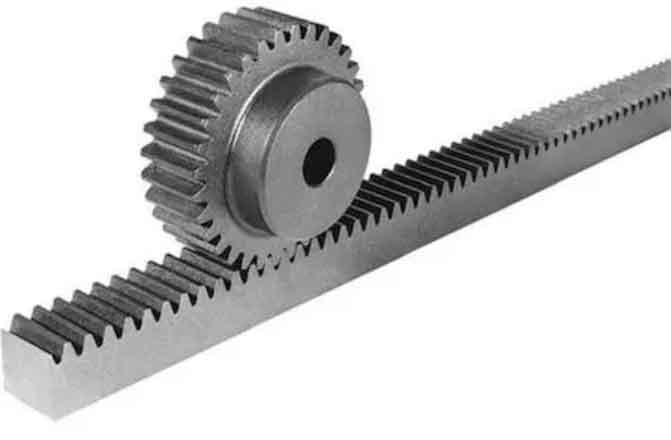
The science of rack and pinion gears involves understanding their mechanism, design principles, and functionality. Rack and pinion gears are a type of gear mechanism that converts rotational motion into linear motion. They consist of a straight toothed rack (a linear gear) and a pinion gear (a small circular gear) that engage with each other to facilitate linear movement. Let’s delve into the science behind rack and pinion gears:
Mechanism:
The rack and pinion gear mechanism works by the interaction between the teeth of the rack and the teeth of the pinion gear. As the pinion gear rotates, the teeth of the pinion mesh with the teeth of the rack, causing the rack to move linearly along its length. This linear movement can be used to achieve precise positioning or transmit linear motion to other components.
Design Principles:
Several design principles are essential for rack and pinion gears:
- Tooth Profile: The tooth profile of the rack and pinion gears determines how the teeth engage with each other. Common tooth profiles include involute, helical, and straight. The tooth profile affects the gear meshing characteristics, load distribution, and efficiency.
- Module and Pitch: The module is a measure of the size of the teeth on the gears, while the pitch is the distance between corresponding points on adjacent teeth. The selection of an appropriate module and pitch depends on factors such as the desired load capacity, accuracy, and smoothness of motion.
- Tooth Geometry: The tooth geometry includes parameters such as the pressure angle, addendum, dedendum, and clearance. These parameters influence the strength, contact pattern, and performance of the gear system.
- Gear Ratio: The gear ratio is determined by the number of teeth on the pinion gear and the rack. It determines the relationship between the rotational motion of the pinion gear and the linear motion of the rack, affecting the speed and displacement of the rack.
Functionality:
Rack and pinion gears serve various functions in mechanical systems:
- Linear Motion Conversion: The primary function of rack and pinion gears is to convert rotational motion into linear motion. The rotation of the pinion gear causes the rack to move linearly along its length, allowing for precise linear positioning or linear motion transmission.
- Positioning and Precision: Rack and pinion gears provide accurate and repeatable linear positioning. The direct engagement between the rack and pinion gears allows for precise control and eliminates backlash, ensuring accurate and reliable positioning.
- Efficient Power Transmission: Rack and pinion gears offer efficient power transmission due to their direct engagement and minimal energy loss. This efficiency is crucial for optimizing system performance, minimizing power consumption, and improving overall system efficiency.
- Load Capacity: Rack and pinion gear systems can handle substantial loads, making them suitable for applications that require lifting, pushing, or transferring heavy objects. The design of the gear teeth and the materials used ensure robustness and durability, enabling the gears to withstand the forces exerted during operation.
- Compact Design: Rack and pinion gears have a compact design, allowing for efficient utilization of space within mechanical systems. Their slim profile and ability to achieve high gear ratios in a small footprint make them suitable for applications with limited space.
Understanding the mechanism, design principles, and functionality of rack and pinion gears is crucial for their proper application in various systems. The science behind rack and pinion gears enables engineers to design and optimize gear systems for efficient linear motion, precise positioning, and reliable operation.
